Author: Mike Goad
Published: September 12, 2022
Camping and Travel Daily Image No. 81
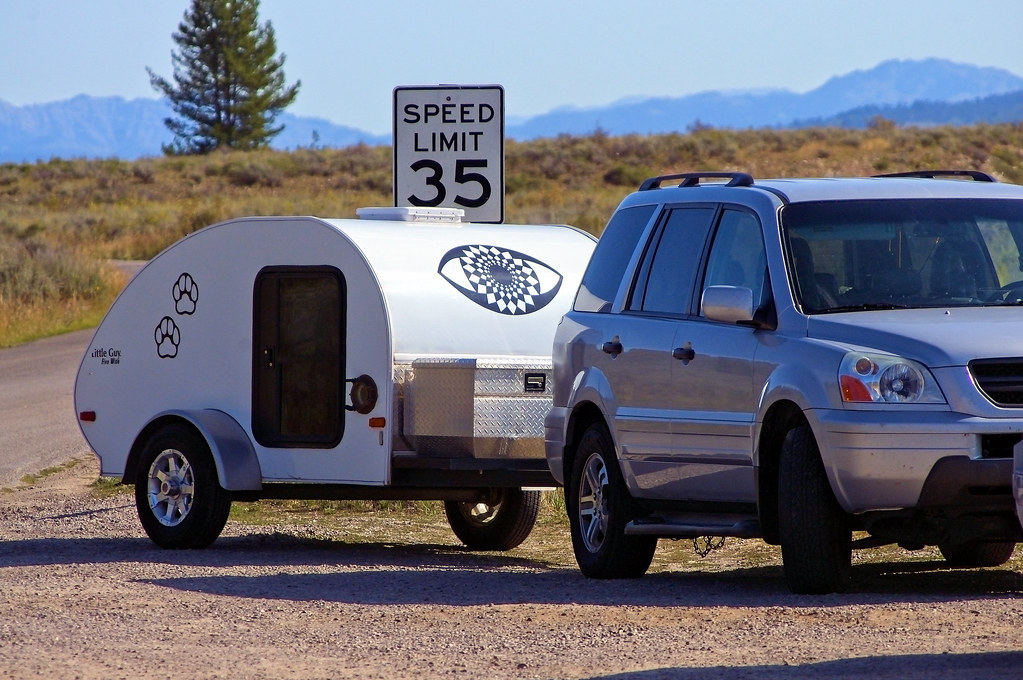
Little Guy teardrop trailer, Grand Teton National Park, Wyoming, September 5, 2014
Little Guy Trailers
Little Guy Trailers
(accessed 9/12/22)
Teardrop camper trailers evolved after World War II, and were originally constructed with materials obtained from surplus markets. The chassis were made of steel U channel or from round steel tubing, and the wheels came fromJeeps that were salvaged from sunken ships. The exterior skins were usually made from the wings of World War II bombers.
While a lot has changed since the introduction of teardrop trailers on the American highway, the reasons for owning a teardrop trailer are the same today as they were when your father or grandfather built his teardrop in the family garage.
Teardrop trailers are sleek, aerodynamic, and practical. Depending on the model, your teardrop trailer can sleep up to three adults or two adults and several children. Little Guy teardrop trailers cab be pulled by any vehicle with a hitch—even the smallest of vehicles such as the Mini Cooper or the VW Beetle can easily tow a Little Guy teardrop trailer.
Little Guy teardrop trailers are the best selling and most popular teardrop trailers in the world, a reflection of our company’s commitment to producing a high-quality, innovative line of products.
Like this:
Like Loading...
Author: Mike Goad
Published: September 11, 2022
Camping and Travel Daily Image No. 80
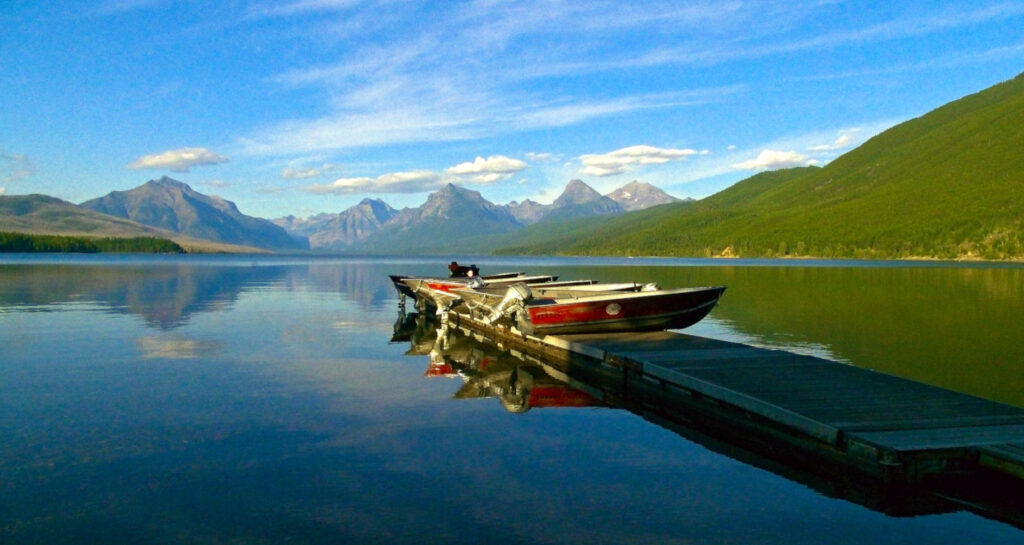
Boats on dock, Lake McDonald from Apgar Village, Glacier National Park (UNESCO World Heritage Site), Montana, August 25, 2014
Lake McDonald
Wikipedia
(accessed 9/4/22)
Lake McDonald is the largest lake in Glacier National Park. It is located at 48°35′N 113°55′W in Flathead County in the U.S. state of Montana. Lake McDonald is approximately 10 miles (16 km) long, and over a mile (1.6 km) wide and 472 feet (130 m) deep, filling a valley formed by a combination of erosion and glacial activity. Lake McDonald lies at an elevation of 3,153 feet (961 m) and is on the west side of the Continental Divide. Going-to-the-Sun Road parallels the lake along its southern shoreline. The surface area of the lake is 6,823 acres (27.6 km2).
The lake is home to numerous native species of trout, and other game fish. Catchable species include: westslope cutthroat trout, rainbow trout, bull trout (char), lake trout (char), Lake Superior whitefish, mountain whitefish, kokanee salmon (landlocked sockeye), and suckers. However, the lake is nutrient-poor and is not considered a prime fishing destination. Grizzly bears, black bear, moose, and mule deer are found in many places near the lake but are most common on the north shore. The lake is surrounded by a dense coniferous forest dominated by various species of spruce, fir, and larch.
At the westernmost section of the lake in Apgar there is a National Park Service visitor center with limited lodging and dining facilities. Lake McDonald Lodge is the largest lodging facility on the lake and is approximately 5 miles (8.0 km) east along the Going-to-the-Sun Road. The lodge was constructed in 1913–14 to resemble a rustic hunting lodge with Swiss-influenced architecture.
McDonald Creek flows into and drains from the lake, and empties into the Middle Fork Flathead River shortly after.
Like this:
Like Loading...
Author: Mike Goad
Published: September 10, 2022
Camping and Travel Daily Image No. 79
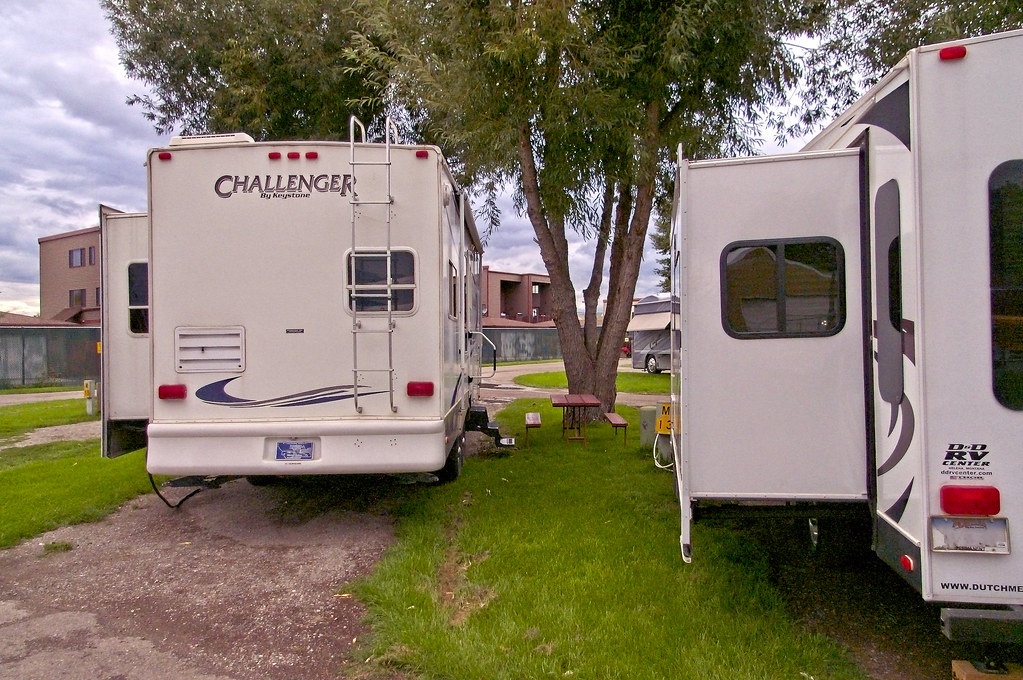
Two fifth-wheel trailers, KOA (Campgrounds of America), Missoula, Montana, August 23, 2014
We hadn’t planned on staying at this KOA on this trip. Our intention had been to continue camping in the national forests before continuing on to Glacier National Park. However, it had turned cold and rainy, and, rather than spend the next several days stuck in our small camper, we decided to travel to a civilized location where we could do laundry, stock up on groceries, and more. Missoula is about an hour and a half from where we were camped in the National Forest and on the route we were taking to Glacier.
At some point over the years, I started taking pictures of RVs and other camping-related subjects with the idea I might eventually use some of them for blog posts or something.
Looking at the rear of these two campers, it’s not obvious whether they are travel trailers or fifth wheels. Looking up the name of the one on the left, Challenger by Keystone, it seems it should be a fifth wheel. There’s no clear indication on the other camper, though, other than it’s a Dutchmen camper. Looking at another photo taken just a few minutes earlier, it turns out that it is a Denali 5th wheel by Dutchmen.
While walking around this campground, I took over two dozen camping-related photos, many of which will be shared here.
Like this:
Like Loading...
Author: Mike Goad
Published: September 9, 2022
Camping and Travel Daily Image No. 78
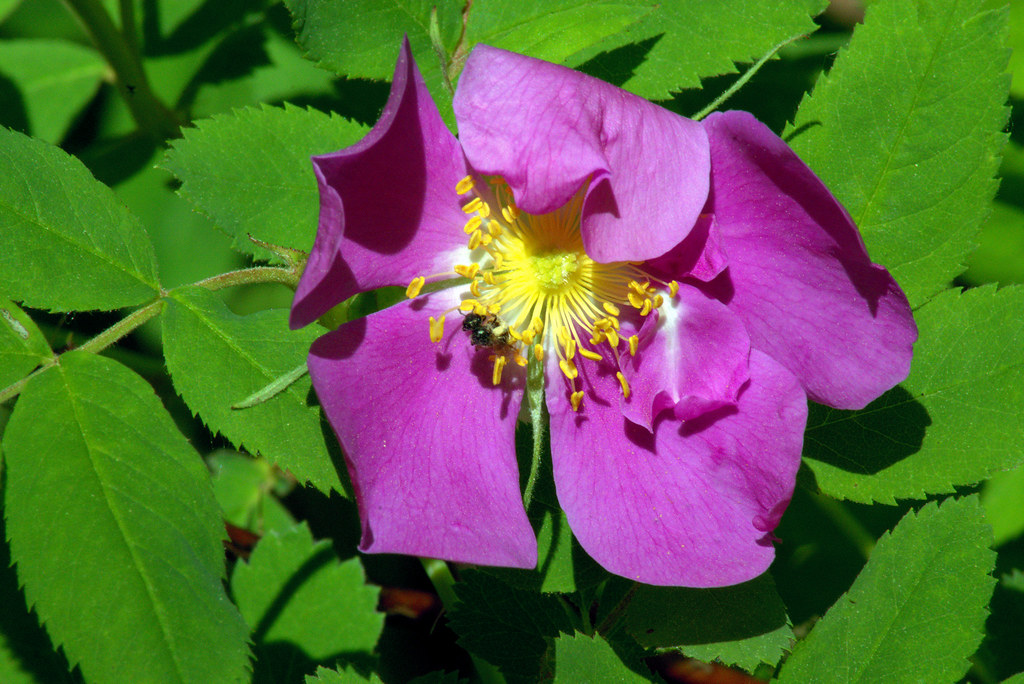
Woods’ Rose (Rosa woodsii), Dry Lake Trail, near Ely, Minnesota, June 13, 2018
The camping images for this series are randomized using a random sort on Flickr. The next image is usually from nearby in the Flickr photostream from that trip. For instance, the image previous to this one, In the Cottonwoods, was taken while on our way home from Northern Minnesota, where the image for this post was taken.
I selected this image, in part, because I actually recognized the blossom. I used a photo of another Woods’ Rose in Camping and Travel Daily Image No. 67, Rosa woodsii. That image was taken 3 years later and a little over 900 miles southeast in Silverthorne, Colorado.
Rosa woodsii
Lady Bird Johnson
Wildlife Center
(accessed 9/4/22)
The Wood rose is a much-branched, deciduous shrub, up to 5 ft. tall, often growing in dense thickets. Stems are red and prickled on their lower portions, though not as well-armed as other wild roses. Leaves are pinnately-compound with five to nine leaflets. Pink, five-petaled flowers, 2 in. across, are followed by many orange-red hips.
This is a variable species, with a number of varieties occurring throughout the western states.
Like this:
Like Loading...
Author: Mike Goad
Published: September 8, 2022
Camping and Travel Daily Image No. 77
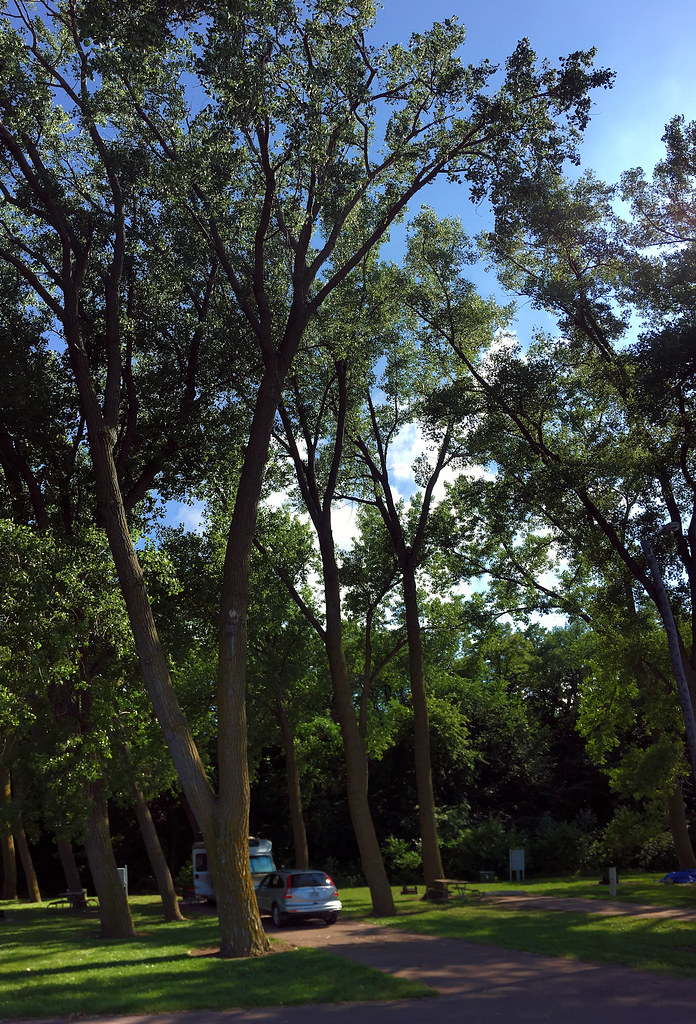
Nebraska Tailwaters Campground & Day-Use Area, 4 miles from South Yankton, Nebraska, June 19, 2018
This was the second time we had camped at the Nebraska Tailwaters Campground & Day-Use Area in our 2008 Navion iQ by Itaska. The first time was when we were traveling east to our daughter’s place in Wisconsin in September 2014 from vacationing in Montana and Wyoming. On this trip, we were coming home from a visit to Wisconsin for our grandson’s graduation followed by a short vacation in Northern Wisconsin and Minnesota.
We actually managed to get the same campsite in the tall cottonwood that we had on our previous visit. Both times we stayed 2 nights.
Nebraska Tailwaters
RECREATION.gov (accessed 9/3/22)
Nebraska Tailwaters Campground, nestled along the Nebraska bank of the Missouri River, is a fun-filled camping destination just downstream of Gavins Point Dam and Lewis & Clark Lake. The 31,400-acre Lewis & Clark Lake and Gavins Point Dam are nestled in the golden, chalkstone-lined valley of the Missouri River growing into one of the most popular recreation destinations in the Great Plains.
Like this:
Like Loading...






